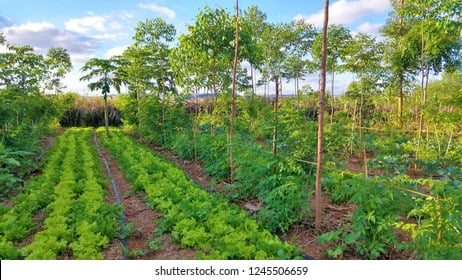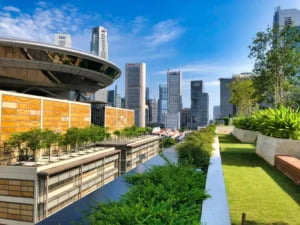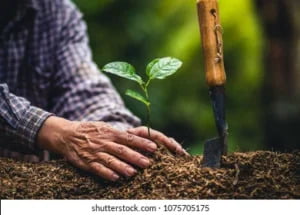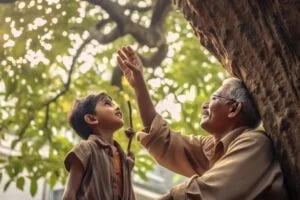The Best Agroforestry Species for Bangladesh

Importance of Agroforestry Species
Conventional agriculture is very productive. However, high productivity depletes or erodes soil. Additionally, it pollutes or dries up watercourses. The food system also produces 20–40% of greenhouse gas emissions. Consequently, many people agree on the urgent need to transform the food system, including agriculture. Therefore, agroforestry, a nature-based approach to production and land use, will play an important role in this transformation. The identifying best agroforestry species for Bangladesh refers the countrywide and regional species.
Agroforestry Species experience in Bangladesh Region
Agroforestry is land use that combines trees with crops, trees with livestock, or trees with both crops and livestock. This mix creates an agroforestry system where components interact beneficially. Consequently, farm yields improve, incomes increase, and soil and water conservation benefits. To identify the best agroforestry species for Bangladesh, focus on the southern and northern regions. Additionally, most shrubs are supplied from Chuadanga and Meherpur districts.
Crop & Diversity with species
Species refers to all shrubs, trees, cuttings, or plants. However, agroforestry species are selected for economic benefits, conservation, animal husbandry, biodiversity, and crop production. Additionally, selection varies based on location, soil type, irrigation scope, and community crop demand. Therefore, the best agroforestry species for Bangladesh depend on these criteria.

Would you think about species selection for agroforestry?
Cyclone
Cyclone-prone areas require different species. Specifically, palm trees with long roots stand strong against cyclones. Therefore, species like areca palm, date palm, Asian palmyra palm, Sonneratia alba, Heritiera fomes, Nipa palm, and coconut trees are ideal. These are feasible for southern Bangladesh, especially riversides and cyclone-affected areas like Khulna, Barishal, Chittagong, and Satkhira.
Species in vulnerable area
These areas are vulnerable due to reliance on forests, seas, and rivers. Moreover, they face cyclones, tides, and varying weather conditions. Therefore, palm trees, common in tropical and subtropical regions, protect riverside embankments and soil. Additionally, they provide oil, timber, and fruits. Consequently, high demand for coconut, areca palm, coconut oil, and palm oil makes them ideal cyclone-friendly species for Bangladesh.
Land & Soil Type
Selecting agroforestry species depends on soil and land type. The southern area of Bangladesh is relatively low-lying. Conversely, North Bengal (Kushtia, Bogura, Rangpur, Panchagarh) is relatively high. Furthermore, Eastern Bengal, known for tea production and hills, has varied soil patterns. Chittagong Division and Sylhet Division feature brown sandy loam to clay loam. Additionally, Chittagong has sandy loam, loamy sand, and silt loam with 53%-83% sand.
Species & verity
Species like tea, sweet chestnut, lychee, guava, Honduras mahogany, Buddhist pine, and elephant apple suit this area. Additionally, Khulna’s soil includes dark grey silty clay, clay, olive grey, and silt loam. About 63% of Khulna features rice-based cropping patterns. Here, mango, lychee, guava, and jackfruit are suitable for fruits. Meanwhile, mahogany, neem, and akashmoni are ideal for timber. Thus, soil and land type are crucial in selecting the best agroforestry species for Bangladesh.


Scope
The scope of agroforestry affects species selection. Cities and villages differ in land use. Cities face land shortages, high prices, and extensive residential and industrial growth. Conversely, villages have more land, with 15-17 decimals used for houses, leaving land for crops.
Therefore, species selection depends on whether it’s for cities or villages. Cities focus on gardening, rooftop gardening, and social tree plantations. Villages have more scope for roadside, plain land, and border plantations. Moreover, nursery plant availability influences species selection. Thus, the buffer zones of Bangladesh have significant potential for agroforestry, making it essential to identify the best agroforestry species for Bangladesh.
Crop Duration
Agroforestry is often considered an additional plan for landowners or farmers, so the duration of species plays a role in selection. The importance depends on the plant’s requirements. Farmers view agroforestry as an intercrop or border crop, planting it alongside main crops.
Some Species in cyclone area:
In cyclone areas, specific species are used to protect land and embankments while providing fruits. Landowners in southern areas consider agroforestry a main crop, planting areca palm commercially due to local demand and export scope, despite it being a long-duration crop. In hill areas or fruit orchards, farmers select vegetable and pulse species as additional crops, harvesting more from the same land annually. Thus, crop duration is a factor in species selection for farmers, the government, and individual landowners.
Salinity Protected:
The salinity-protected tree needs to be selected during species identification. Otherwise, the plants will not be sustained. However, testing soil salinity is also important. Salinity hampers growth, productivity, and life duration. When a species has the capacity for the highest ppm salinity, then this species will sustain for long. An average of 13-15 ppm salinity would be preferable during species selection.
Economic Benefit
One of the key objectives of agroforestry is to ensure economic benefits for landowners. Farmers can get fruits, money, and medicine from agroforestry, providing additional income. In Natore, farmers grow medicinal crops, making vegetables and long-duration crops the best species for this area. The high demand for timber in Bangladesh, due to furniture production, use as fuel in brick fields, and boat production in riverside areas, influences timber production in agroforestry.
Social Benefits
In Bangladesh, there’s a cultural practice of checking the number of trees on land before purchasing it, as it increases land prices. Farmers grow trees as agroforestry around their houses for marriage preparations, treatment, and social costs. Climate change impacts have made people realize the importance of agroforestry. Farmers rest under tree shadows while working in the fields, benefiting from long-duration trees for social purposes. Beautification of houses with trees adds prestige. For instance, a 6th-floor building at Rangpur RDRS is designed with building beautification, protecting it from heatwaves.


CO2 Sequestration
Species selection considering CO2 sequestration is important. Many organizations now work on climate change, facilitating rooftop gardening and regenerative agriculture. The weight of CO2 in trees is determined by the ratio of CO2 to C, which is 44/12 = 3.67. Species with high carbon sequestration capacity and low water consumption are preferred. For example, during a heatwave, the temperature difference between open space (44°C) and under a tree (36°C) highlights the importance of CO2 sequestration species for planetary responsibility.
My Comments
We do not find required specifications, and plant prices increase daily, demotivating landowners for agroforestry. Additionally, plant canopies spread, causing conflicts with neighbors and affecting under-crop production due to shadows. Moreover, the protection costs using fences demotivate landowners. However, we need to find the right species even from distant nurseries if not available locally. Regenerating the planet and ensuring a net-zero carbon lifestyle is our responsibility. Therefore, we should accept challenges and embrace agroforestry concepts. The government has initiated tree planting around the Sundarbans forest. For example, I have seen this in Rajapur, Saronkhola under Chandpai Range. Thus, it is crucial to identify the best agroforestry species for Bangladesh.

Pingback: Tree Planting Jobs - Carbon Revolve
Pingback: Challenges of Agroforestry in Bangladesh - Carbon Revolve
Pingback: What is agroforestry? Simply Explained - Carbon Revolve
Hiya, I am really glad I’ve found this info. Today bloggers publish just about gossips and net and this is really irritating. A good site with exciting content, that is what I need. Thanks for keeping this website, I’ll be visiting it. Do you do newsletters? Can not find it.